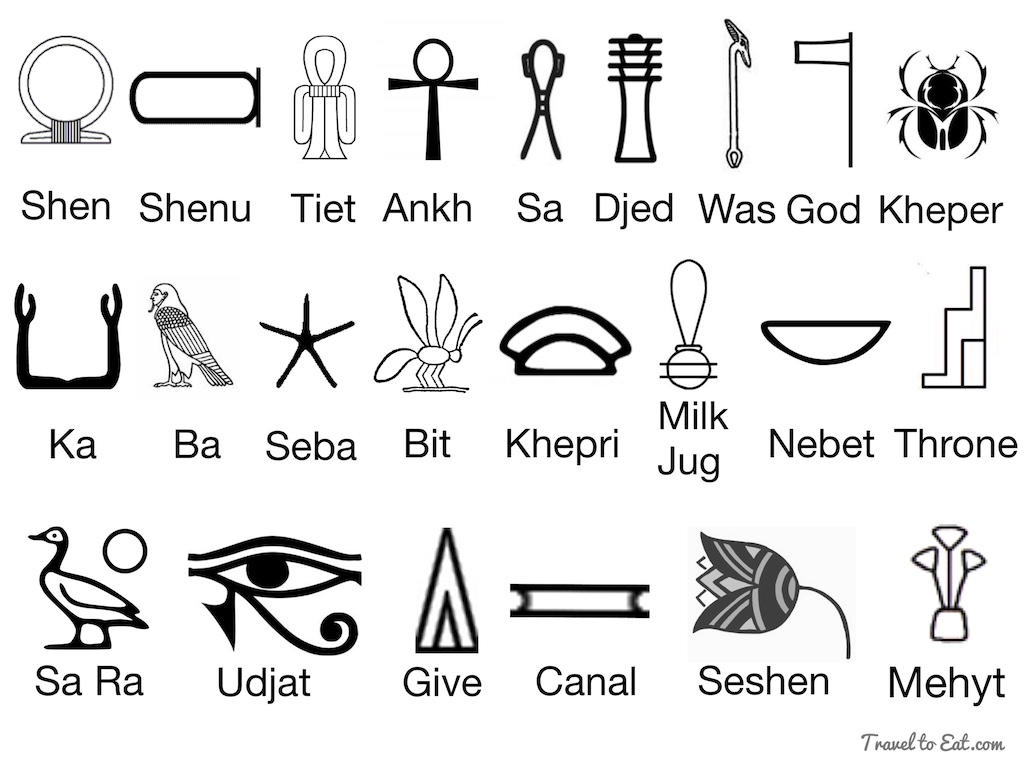 One of the great stories in cryptology over the last 200 years was working out the meaning of Egyptian hieroglyphs. This was the Egyptian writing of the old dynasties (the ones that had built the pyramids). The writing had fallen out of use and been replaced by different alphabets so that by the beginning of the common era (about two thousand years ago) there was no one left who knew how to read hieroglyphic writing. Throughout the next 1800 years, scholarly interpretations of this writing— and there are thousands of walls and obelisks with tens of thousands of lines of hieroglyphic surviving— ranged from the idea that the writing had no meaning at all as writing but was religious decoration to purely imaginary reconstructions of what the modern “scholars” wanted the hieroglyphics to say. The great breakthrough in understanding the real meaning of hieroglyphic writing came with the discovery of the Rosetta Stone in 1799. The stone carried a long government proclamation in three languages— the Egyptian script current at the time it was made, ancient Greek, and hieroglyphics. The intent was to have the information available to all, no matter what language they spoke. The benefit to modern scholars was they then had a coding sheet to break the difficult script of hieroglyphics.
One of the great stories in cryptology over the last 200 years was working out the meaning of Egyptian hieroglyphs. This was the Egyptian writing of the old dynasties (the ones that had built the pyramids). The writing had fallen out of use and been replaced by different alphabets so that by the beginning of the common era (about two thousand years ago) there was no one left who knew how to read hieroglyphic writing. Throughout the next 1800 years, scholarly interpretations of this writing— and there are thousands of walls and obelisks with tens of thousands of lines of hieroglyphic surviving— ranged from the idea that the writing had no meaning at all as writing but was religious decoration to purely imaginary reconstructions of what the modern “scholars” wanted the hieroglyphics to say. The great breakthrough in understanding the real meaning of hieroglyphic writing came with the discovery of the Rosetta Stone in 1799. The stone carried a long government proclamation in three languages— the Egyptian script current at the time it was made, ancient Greek, and hieroglyphics. The intent was to have the information available to all, no matter what language they spoke. The benefit to modern scholars was they then had a coding sheet to break the difficult script of hieroglyphics.
Two stamps that presented the greatest challenge to platers were the 1¢ and 3¢ stamps of the 1851 issue of the United States. These stamps were produced from multiple plates which means that there are thousands of possible plate positions. Each stamp, then, is like a piece of a jigsaw puzzle from a box in which the pieces were from multiple puzzles. The difficulty is not only in figuring out where the piece fits into the picture but also even which picture it is from. Adding to the difficulty of this task of the first philatelists who tried to work out these plating formats— Stanley Ashbrook for the 1¢ 1851 and Caroll Chase for the 3¢— was the fact that, when they started, they didn’t know exactly how many plates had been used in the first place. Ashbrook’s and Chase’s work, completed before 1940, (and each worked largely alone and with only a magnifying glass) represent the high point of philatelic cryptology, done without the benefit of a philatelic Rosetta Stone. There are some achievements in our hobby that are so significant that they deserve to be known to a wider audience, and this is certainly one of them.
